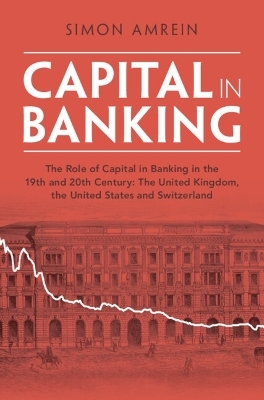
Capital in Banking
Cambridge University Press (Verlag)
978-1-009-27689-4 (ISBN)
- Noch nicht erschienen (ca. Dezember 2024)
- Versandkostenfrei innerhalb Deutschlands
- Auch auf Rechnung
- Verfügbarkeit in der Filiale vor Ort prüfen
- Artikel merken
Capital in Banking traces the role of capital in US, British, and Swiss banking from the 19th to the 21st century. The book discusses the impact of perceptions and conventions on capital ratios in the 19th century, the effects of the First and Second World Wars, and the interaction of crises and banking regulation during the 1930s and the 1970s. Moreover, it emphasises the origins of the risk-weighted assets approach for measuring capital adequacy and explains how the 2007/2008 crisis led to a renaissance of unweighted capital ratios. The book shows that undisclosed reserves, shareholders' liability, and hybrid forms of capital must be considered when assessing capital adequacy. As the first long-run historical assessment of the topic, this book represents a reference point for publications in economics, finance, financial regulation, and financial history. This title is also available as Open Access on Cambridge Core.
Simon Amrein is a Lecturer and Head of the MSc in Banking and Finance programme at the Lucerne School of Business. He studied finance, economic history, and history at the Lucerne School of Business, the London School of Economics and Political Science and the European University Institute in Florence.
Part I. Introduction: 1. The scope of this book; 2. The role and relevance of capital in banking; 3. Chapter outline; Part II. Capital Ratios in the Long Run: 1. Capital ratios since 1840; 2. The problems of constructing long-run time series; 3. Structural changes in balance sheets; 4. Hidden reserves; 5. Extended Shareholder Liabilities; Part III. The 19th Century: How Ideas Shape Capital Structures: 1. Early banking literature: shared roots, different trajectories; 2. England: balancing the interests of shareholders and depositors; 3. Switzerland: transparency in the absence of regulation; 4. United States: capital requirements from the very beginning; 5. Concluding remarks; Part IV. Two World Wars: Overturning Conventions: 1. Wartime dynamics of balance sheets; 2. Assets side: financing wars; 3. Liabilities side: deposits and capital issuances; 4. British banking and capital: the absence of a topic; 5. Amalgamations movement in England; 6. During and after the second world war: banking without capital; 7. Switzerland: the demise of guidelines – and the rise of rules; 8. After the first world war: back to normal; 9. The importance of formal capital requirements; 10. The United States: the birth of risk-weighted assets; 11. From deposits to assets: a new supervisory focus; 12. Categorizing assets according to risk; 13. Concluding remarks; Part V. How Crises Drive Regulation: 1. The international environment and regulatory convergence; 2. From informal to formal: the regulation and supervision of banking and capital in the United Kingdom; 3. The irrelevance of capital: 1945 to 1973; 4. The relevance of capital: the secondary banking crisis; 5. The banking acts of 1979 and 1987; 6. Regulation in Switzerland – and how it was influenced; 7. Banking legislation in the 1930s; 8. The evolution of capital regulation: 1934–1991; 9. The influence of banks on the evolution of banking regulation; 10. The United States: finding the right weight; 11. Changes in capital adequacy standards in the 1970s; 12. The Latin American debt crisis as a driver of capital standards; 13. Concluding remarks; Part VI. Epilogue: 1. Basel capital requirements and the characteristics of leverage before the 2007/2008 financial crisis; 2. The limits of capital; Bibliography.
| Erscheint lt. Verlag | 31.12.2024 |
|---|---|
| Reihe/Serie | Studies in Macroeconomic History |
| Zusatzinfo | Worked examples or Exercises |
| Verlagsort | Cambridge |
| Sprache | englisch |
| Themenwelt | Geschichte ► Teilgebiete der Geschichte ► Wirtschaftsgeschichte |
| Wirtschaft ► Betriebswirtschaft / Management ► Finanzierung | |
| Betriebswirtschaft / Management ► Spezielle Betriebswirtschaftslehre ► Bankbetriebslehre | |
| Wirtschaft ► Volkswirtschaftslehre ► Finanzwissenschaft | |
| ISBN-10 | 1-009-27689-1 / 1009276891 |
| ISBN-13 | 978-1-009-27689-4 / 9781009276894 |
| Zustand | Neuware |
| Haben Sie eine Frage zum Produkt? |
aus dem Bereich


